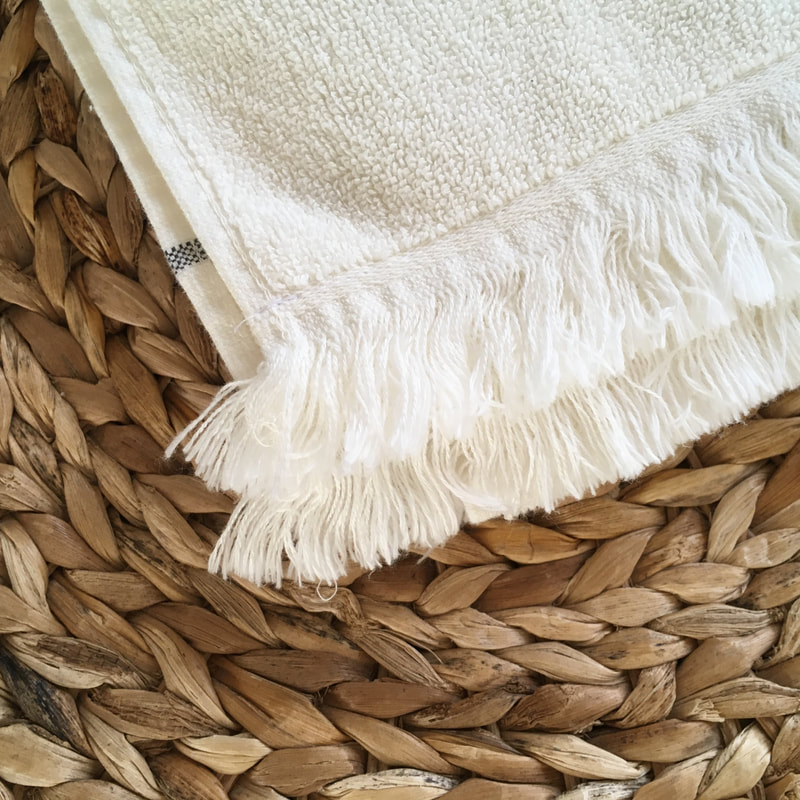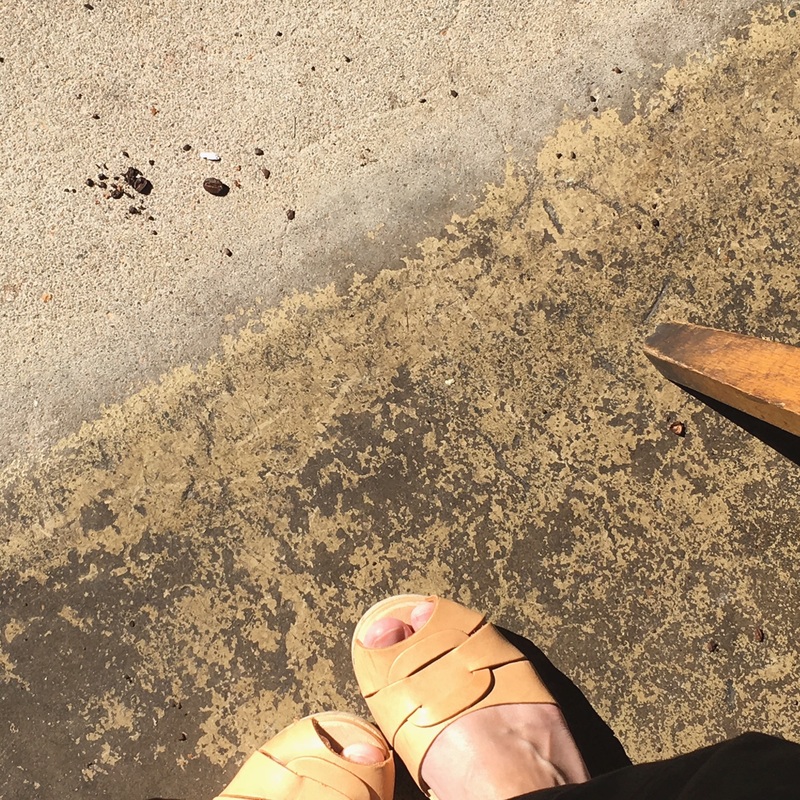- 73 :: composting fingernails (no need to preserve them in a landfill)
- 74 :: composting hair from my comb each morning + from haircuts too (it will become fertile soil)
- 75 :: avoiding disposables by ordering coffee + treats to stay (+ eating it outside, because : Covid)
- 76 :: considering expanding houseplant love to include food-growing plant love (because food grown at home doesn't require any packaging or transport emissions)
- 77 :: reducing waste even further by getting just a sample of that bulk conditioner to try
- 78 :: meal planning, because it helps us eat in-season produce + to avoid food waste
- 79 :: making a grocery list so we get what we need + have nothing to waste
- 80 :: choosing human-powered when possible (this is our coffee grinder)
- 81 :: choosing well-made items with no plastic parts
- 82 :: asking for help + replacing just a part rather than the whole thing (for that grinder that has worked so well for a decade)
|
0 Comments
The other day, I mentioned my simple grocery list + was asked for a little more detail. I didn't originally share the specifics, because we all like to eat differently...and also because I'm not sure I have this whole nutrition thing dialed in perfectly. I try to focus on appropriate portions of mostly plant-based, whole foods that are in-season, package-free + as local as possible. I'm also aware that simplicity is key for me right now. So...please take this only as an example of how I'm approaching my grocery list + not a recommendation of how to eat, k? :)
As a starting point, I thought through what each of the people I feed eat throughout the day. I am happy to eat the same thing for breakfast + lunch every day. My partner has a choice of two things for breakfast + two or three things for lunch (*). Our daughter eats what she likes. Our current list looks like this: B: coffee + breakfast bite cereal or oatmeal* L: fruit + granola + yogurt leftovers or pb sandwich or rice noodles + veg* fruit D: veg + grain + protein (bowl, pasta, salad, soup) tea + fruit or smoothie The above list is written on one side of a notecard. On the flip side of the notecard, I wrote a loose list of things that supply these meals. There are specifics like oatmeal + peanut butter...and more general things like in-season fruit + in-season veg which can be chosen according to what looks good on a particular trip to the store (which provides variety in our meals). This is my current list of items: in-season fruit in-season veg greens lemons milk eggs butter cheese bread oatmeal granola cereal honey PB rice/quinoa/pasta olive oil coconut milk beans TP soap dish soap laundry soap This list covers the staple things that ensure we can make + eat real meals at home. Things like tea + spices that run out less often can be written down for a specific trip. I've made my grocery lists in various ways over the years, but this is probably the simplest system I've used. It involves decreasing some expectations for more complicated meals + variety, but this is exactly how I want to eat...so it's working for me. (Of course, I can always accommodate a craving too.) All of which leaves a little time for sipping chai on the porch of a favorite coffee shop on my day off instead of doing chores all day. :) Love, Jane Supply chain issues, rising gas prices and everything else seem to be contributing to palpably rising prices at the grocery store. While zero-waste grocery shopping can be more expensive than regular grocery shopping in some instances, there are actually many more ways that shopping with the planet in mind can decrease our grocery bills. Here are a few ways to decrease that grocery bill while doing some climate action as well:
May your bodies be nourished + your grocery bills be reasonable. :) Love, Jane This weekend, someone asked me why I don't do a men's line.
I replied, I am working as hard as I care to be. I value my free time. He said, that is pretty interesting, I like that. You know what I say, freedom is wealth. #freestate ~Jesse Kamm (photo via) When I start a new journal, I enjoy taking some time to review the past journal + to think through what I want to bring forward from it. The first few pages of each of my journals contain headings like ritual, zero-waste, home, clothing, food, movement + budget. I enjoy thinking through these topics and migrating lists + intentions onto new pages.
A journal usually lasts a full year for me, but this past year I filled three journals. Those front pages did not make it into every journal. To be honest, these values + systems have felt a bit overwhelming this year. My life shifted a bit + new ways of living were required. I finally decided to write those pages onto cards that I can move from journal to journal easily. The food card received some revisions + now lives with the reusable bags in my car so I can reference it at the grocery store. I can pull out the clothing card, when the weather is about to change + I need to decide what I need/want moving forward. I can reference our budget goals easily, when I need a jolt of reality or when big decisions need to be made. Notecards seem like appropriate vessels for these systems. They provide only enough space for the basics. I like to keep my thoughts on these concepts uncluttered + manageable. These cards are simple + succinct reminders of my systems. Love, Jane Many of us believe that meal planning + grocery list making are helpful parts of eating intentionally. We know that time spent in these endeavors pays off in reducing both our food waste + our grocery bills. Even so, many of us find ourselves at the grocery store unprepared at times. I've found myself in the unprepared category more + more lately, as my previous routine has been interrupted by a new schedule. When a new challenge comes along, I look for ways to simplify. I've simplified my grocery list, by simplifying the way I think about meal planning. Variety was once high on my list of meal planning priorities, but lately I've let that go a bit. I'm focusing on bowl meals (vegetables + greens + grain + protein), because they are my favorite. A bowl meal could be a salad, soup, roasted vegetables, pasta (Julia's favorite), etc. A bowl meal could skew Japanese, Indian, Italian, Greek, Mexican (variety!), etc. And yet, the concept is simple. On one side of a notecard, I've listed what we eat for each meal. We are happy to eat basically the same things every day for breakfast + lunch. Supper is a bowl meal. Now it is quite simple to turn the card over + make a basic list of items to stock (in-season fruits, vegetables, greens, grains, lemons, beans, etc.). I can keep this list in my car (along with the grocery bags). The list is not specific, but it lists all the standard things (including items like soap + toilet paper) we need in order to function + make real meals at home. These two lists fit onto one notecard which makes the whole system feel quite simple + manageable.
I imagine a lot of people shop like this...with the list in their heads. I'm not sure if it is the stress that I will forget something, a chatty companion, my poor memory or a very limited budget that has preventing me from shopping purely by memory. All I can say is that this list is a shift for me...and I think it's working...for now. :) Love, Jane Little resources are needed to keep a garment in rotation-
neither money nor material. ~Kate Fletcher Plants, books, coffee + banana bread are some of my favorite things...and they can be climate action too! yay!
The warm days are coming with a little bit more frequency lately, and these warm neutrals are holding my attention. I'm dreaming of bare legs or bare arms soaking in the afternoon sunshine. Can't wait. :)
All lovely photos via links. Love, Jane Climate action is about choices...not about a list of special, new items to purchase. It's about our perspective + questioning our habits. Fun! :)
|
on a journey toward zero-waste, simplicity, + compassion :: daring to choose fair one choice at a time
|





































 RSS Feed
RSS Feed